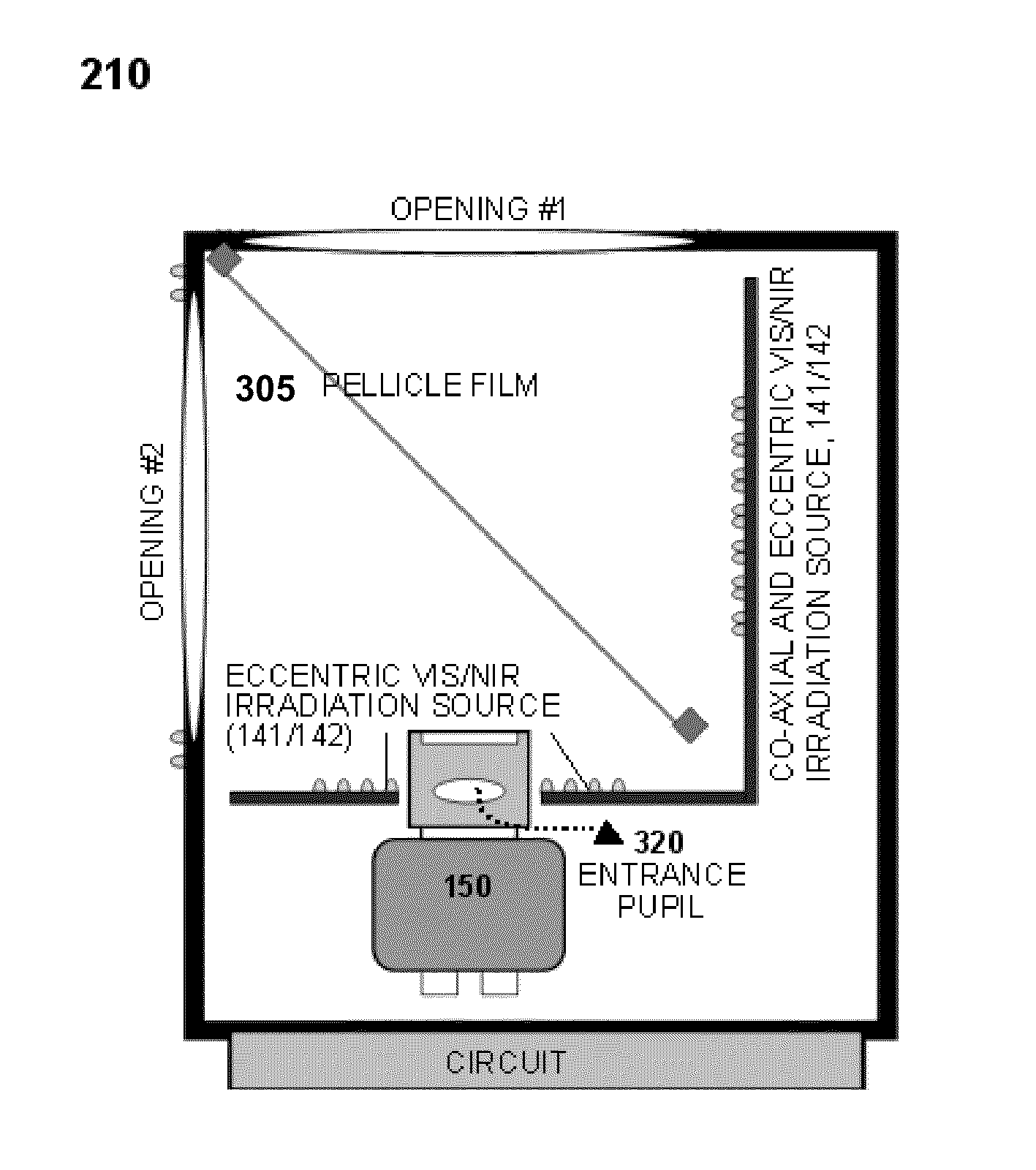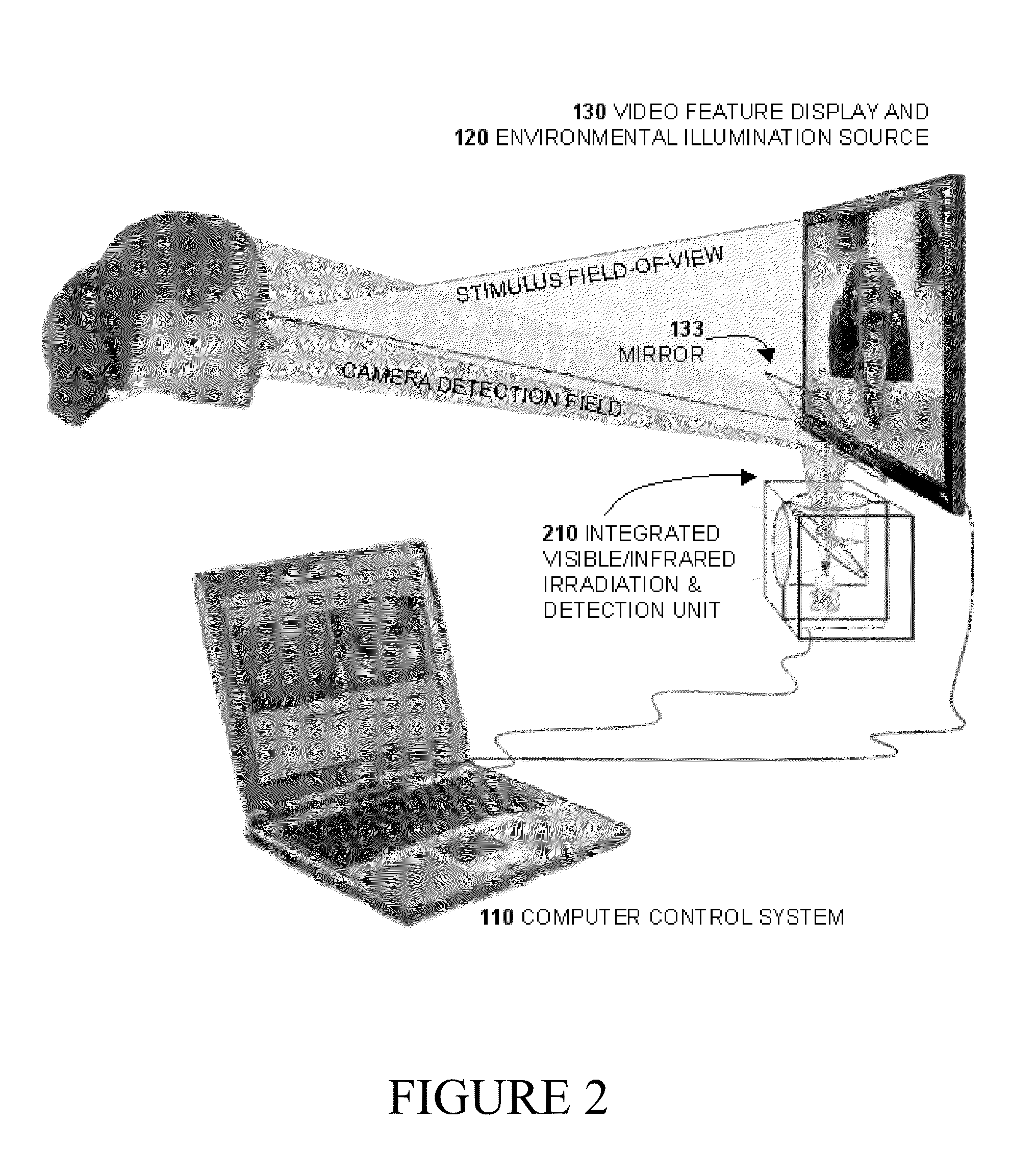Adaptive Photoscreening System
a photoscreening and adaptive technology, applied in the field of medical screening, can solve the problems of not meeting the needs of large-scale screening simultaneously, preventing the proper development of the brain's binocular function, and unable to meet the current device that is appropriate for large-scale screening
- Summary
- Abstract
- Description
- Claims
- Application Information
AI Technical Summary
Benefits of technology
Problems solved by technology
Method used
Image
Examples
Embodiment Construction
Early detection of abnormal conditions or vision problems is desirable and is very important, because such conditions are threatening to life, sight, and / or development. This need exists in the U.S. and even more so in developing nations and other nations where medical resources are severely limited. Accordingly, one embodiment, among others, of the present disclosure provides in situ, real-time computer analysis of ocular images to determine and classify photoscreening image results as normal or abnormal in each of five screening areas. Further, in accordance with the present disclosure, non-medical personnel may perform screening tests using a comparatively inexpensive ocular screening device, which is characterized by transportability and robustness.
FIG. 1 shows one embodiment of an Adaptive Photoscreening System (APS) 100 of the present disclosure. APS 100 applies advanced photoscreening technology along with eye tracking, dynamic visual stimulus, and computer-assisted image int...
PUM
 Login to View More
Login to View More Abstract
Description
Claims
Application Information
 Login to View More
Login to View More - R&D
- Intellectual Property
- Life Sciences
- Materials
- Tech Scout
- Unparalleled Data Quality
- Higher Quality Content
- 60% Fewer Hallucinations
Browse by: Latest US Patents, China's latest patents, Technical Efficacy Thesaurus, Application Domain, Technology Topic, Popular Technical Reports.
© 2025 PatSnap. All rights reserved.Legal|Privacy policy|Modern Slavery Act Transparency Statement|Sitemap|About US| Contact US: help@patsnap.com



